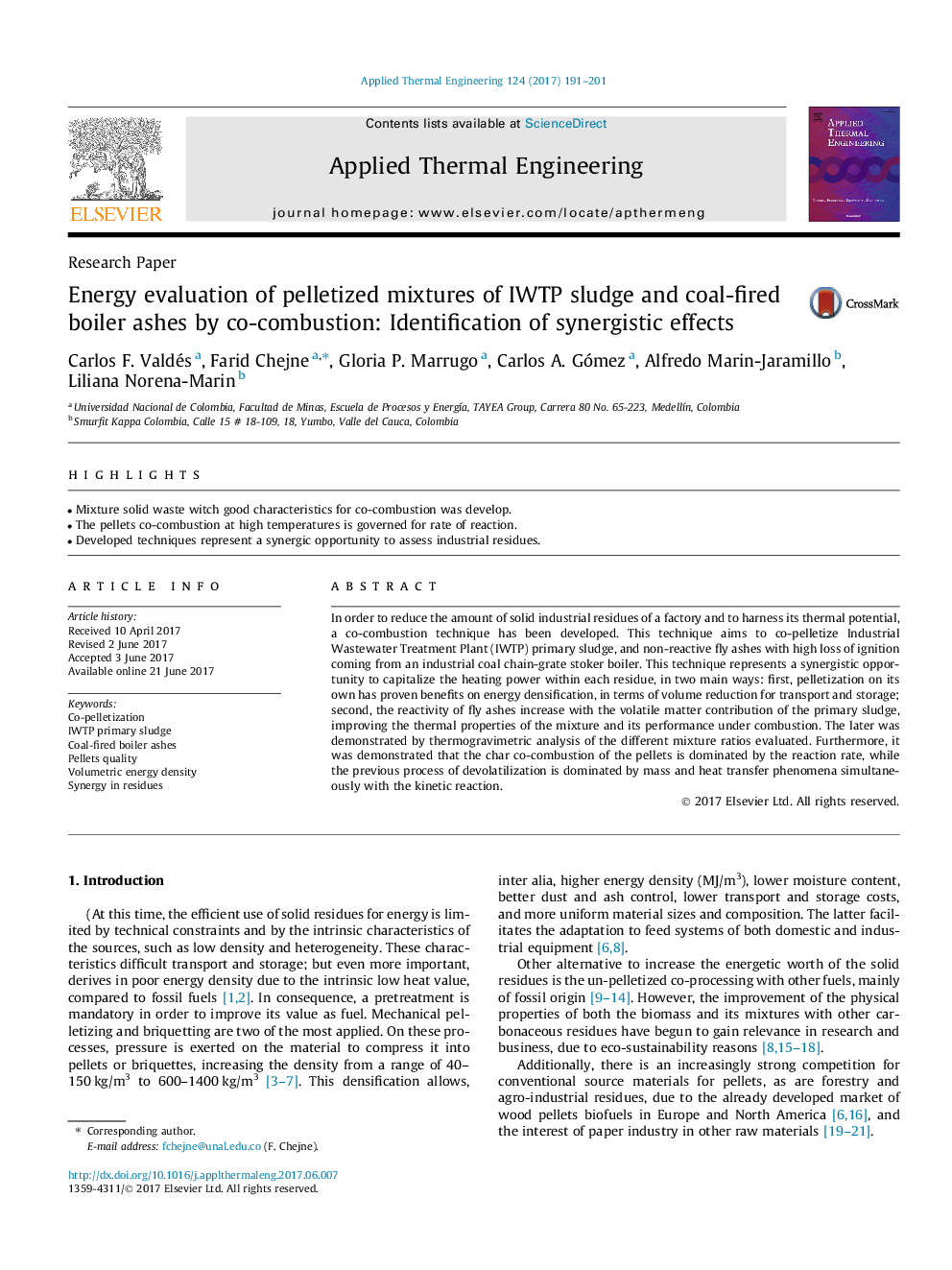| Article ID | Journal | Published Year | Pages | File Type |
|---|---|---|---|---|
| 4990605 | Applied Thermal Engineering | 2017 | 11 Pages |
Abstract
In order to reduce the amount of solid industrial residues of a factory and to harness its thermal potential, a co-combustion technique has been developed. This technique aims to co-pelletize Industrial Wastewater Treatment Plant (IWTP) primary sludge, and non-reactive fly ashes with high loss of ignition coming from an industrial coal chain-grate stoker boiler. This technique represents a synergistic opportunity to capitalize the heating power within each residue, in two main ways: first, pelletization on its own has proven benefits on energy densification, in terms of volume reduction for transport and storage; second, the reactivity of fly ashes increase with the volatile matter contribution of the primary sludge, improving the thermal properties of the mixture and its performance under combustion. The later was demonstrated by thermogravimetric analysis of the different mixture ratios evaluated. Furthermore, it was demonstrated that the char co-combustion of the pellets is dominated by the reaction rate, while the previous process of devolatilization is dominated by mass and heat transfer phenomena simultaneously with the kinetic reaction.
Related Topics
Physical Sciences and Engineering
Chemical Engineering
Fluid Flow and Transfer Processes
Authors
Carlos F. Valdés, Farid Chejne, Gloria P. Marrugo, Carlos A. Gómez, Alfredo Marin-Jaramillo, Liliana Norena-Marin,
